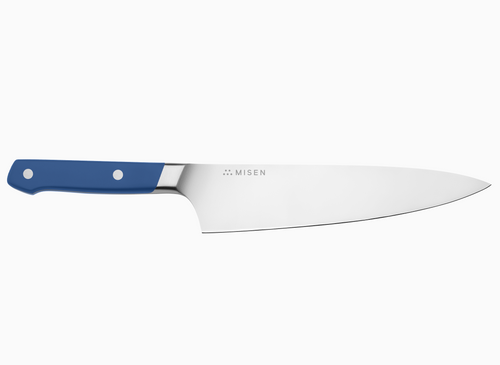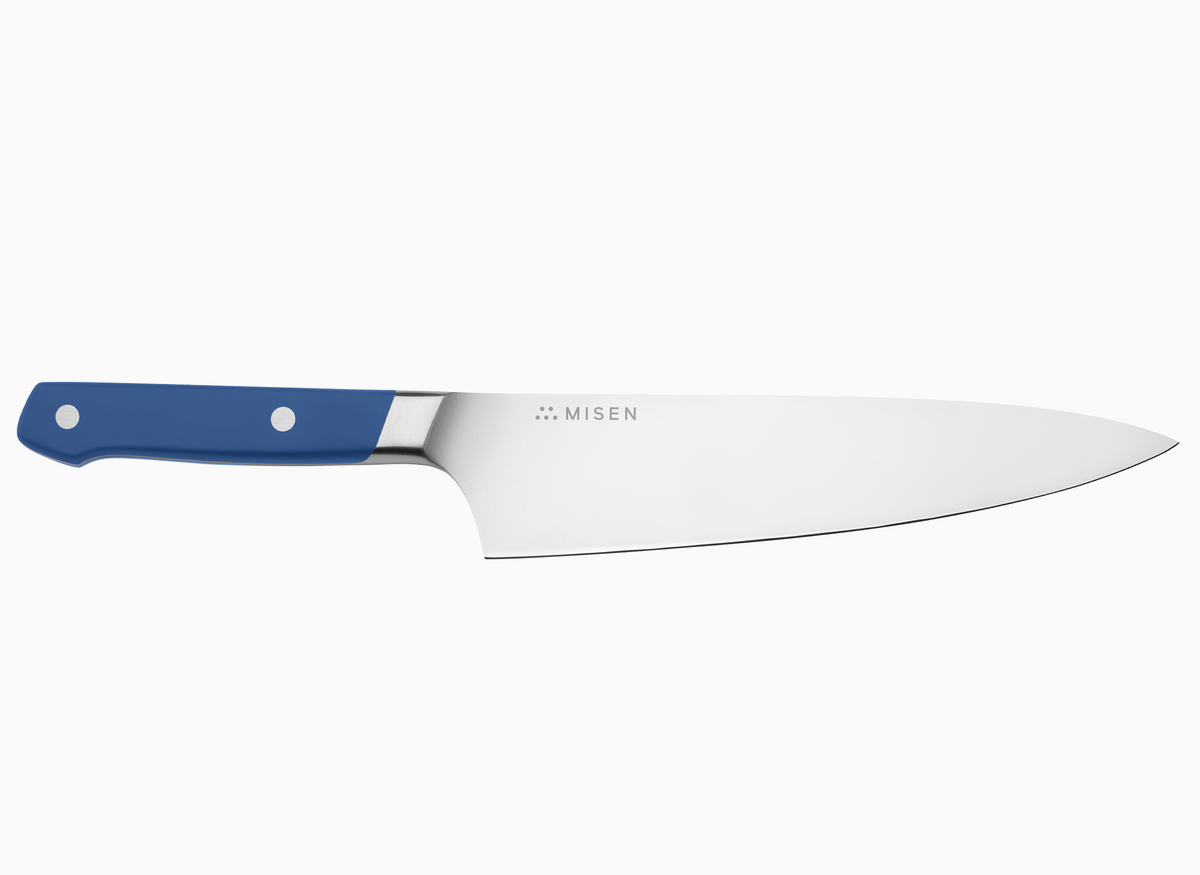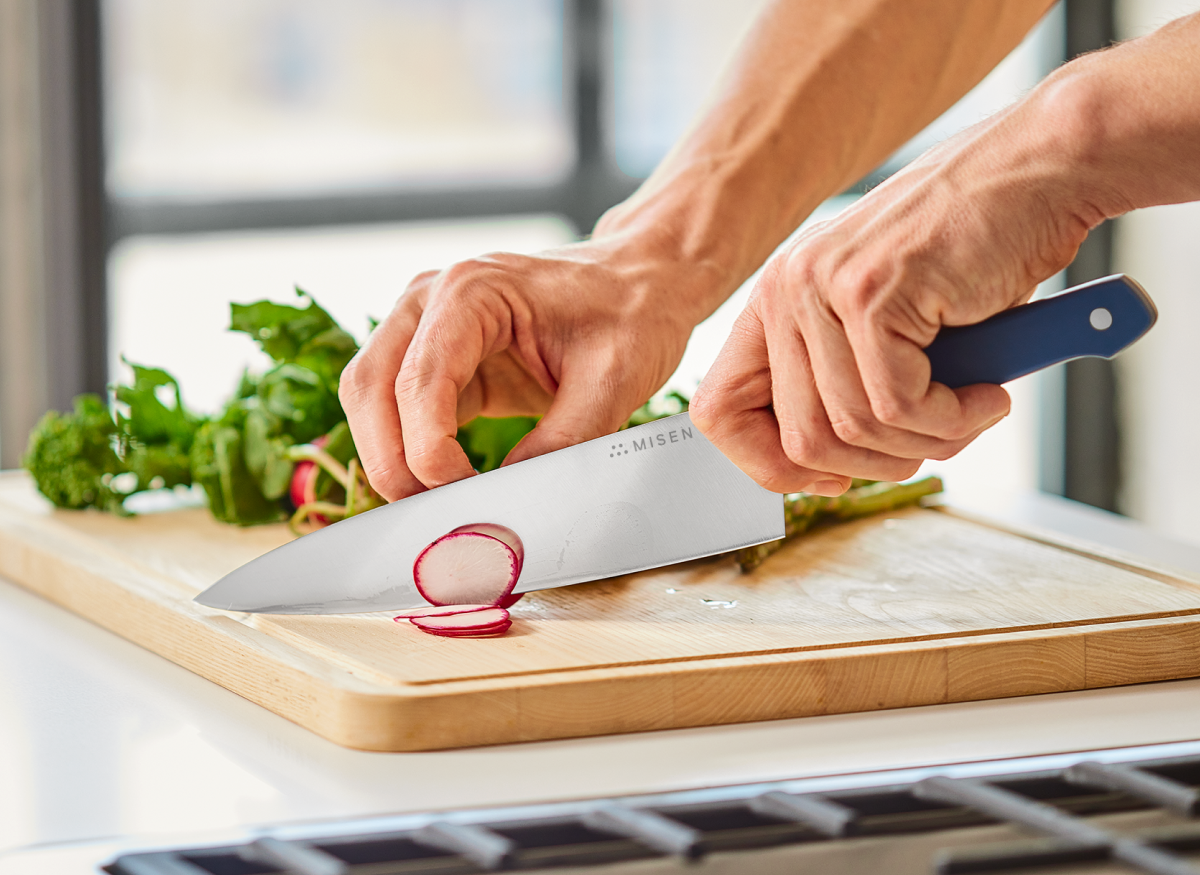How to Cut a Mango

Cutting mangoes like a pro can take your culinary game to the next level and help you get the most out of this delicious tropical fruit. We've put together this comprehensive guide covering everything from checking ripeness to advanced slicing techniques, so you can confidently tackle any mango in your kitchen.
Introduction to Cutting Mangoes
Importance of proper mango cutting techniques
Let's face it – mastering mango cutting is a game-changer in the kitchen. When you know how to navigate around that tricky pit, you'll get way more juicy goodness out of each fruit. Plus, clean cuts preserve that perfect mango texture we all love. No more mangled mango messes!
Good technique isn't just about quantity though. It's about quality too. When you can slice and dice with precision, you open up a world of culinary possibilities. Imagine wowing your friends with picture-perfect mango roses or elevating your salsa game with uniform mango cubes. Trust us, a little skill goes a long way in making your mango dishes shine.
Overview of mango anatomy
Before we dive into cutting, let's break down mango anatomy 101. These tropical treats have three main parts:
- The pulp (mesocarp): This is the good stuff – the sweet, juicy flesh we're after. It makes up about 50-60% of the mango's weight.
- The peel (epicarp): While we usually toss this, it actually contains some beneficial compounds. It's about 15-20% of the fruit's weight.
- The seed kernel (endocarp): This big, flat pit takes up 35-55% of the mango's weight. It's surrounded by a tough, fibrous shell.
Understanding this structure is key to efficient cutting. It'll help you work around that pesky pit and get the most bang for your mango buck.
Preparing the Mango
Determining mango ripeness
Picking the perfect mango is half the battle. Here's a pro tip: don't rely on color alone. Different varieties can be ripe at different hues. Instead, give your mango a gentle squeeze. A ripe one will have a bit of give, like a perfectly ripe avocado. Too firm?It needs more time. Too soft? You might have waited a tad too long.
Another clue is the smell. A ripe mango will have a sweet, fruity aroma near the stem. No smell? It's probably not ready yet. And don't worry about those dark spots or lines near the tip – that's just "sap burn" and often means your mango is good to go.
If you end up with some unripe mangoes, no worries! Just leave them out at room temperature to ripen naturally. Want to speed things up? Wrap them in a towel or pop them in a paper bag. The trapped ethylene gas will work its ripening magic faster.
Basic Mango Cutting Techniques
The 'hedgehog' method
Ready for a fun and easy way to cut mangoes? Enter the 'hedgehog' method. It's not only efficient but also creates an impressive presentation that'll make you look like a fruit-cutting pro.
Here's how to do it:
- Start by slicing off the two 'cheeks' of the mango on either side of the pit.
- Score the flesh of each cheek in a crosshatch pattern, being careful not to cut through the skin.
- Gently push the skin side, inverting the mango cheek so the cubes pop outward – voila, mango hedgehog!
This technique is perfect for snacking, serving on fruit platters, or as a fun, interactive treat for kids. Plus, it makes it super easy to scoop out those perfect mango cubes with a spoon.
Slicing mango cheeks
Alright, let's talk about a fundamental mango-cutting skill: slicing those juicy cheeks. This technique is all about working around the pit to get the most flesh possible.
Here's your step-by-step guide:
- Lay your mango on the cutting board and find the pit. You'll feel a slight bump running down the center – that's your target.
- Using a sharp knife (we love our chef's knife for this), cut the two cheeks off the pit. Start from the stem end and curve your knife slightly to follow the pit's shape.
- You'll end up with two large, flat sides of mango that are easy to work with.
Don't forget about the flesh still clinging to the pit! Use the same top-down approach to slice off any remaining fruit. It might not be as pretty as the cheeks, but it's just as delicious. Perfect for snacking or tossing into smoothies!
Advanced Mango Cutting Methods
Creating mango cubes
Ready to level up your mango game? Let's talk cubes. This technique builds on the cheek-slicing method we just covered, with an extra step to create those perfect, uniform pieces.
Here's how to cube like a pro:
- After slicing off the mango cheeks, score the flesh in a grid pattern without piercing the skin. Aim for cuts about 1/2 inch apart for nice, even cubes.
- Now you've got options for removing those cubes:
- Carefully turn the mango half inside-out, pressing from the skin side. Then, use a paring knife to slice off the protruding cubes.
- Use a spoon to scoop out the pre-cut cubes, leaving the skin behind.
- For a cool trick with riper mangoes, use the rim of a small glass to separate the cubes from the skin in one smooth motion.
These perfect cubes are great for snacking, adding to salads, or freezing for future smoothies. Pro tip: our santoku knife is a dream for creating those precise, uniform cuts – especially great for sushi or other Asian-inspired dishes.
Cutting mango for specific dishes
Different dishes call for different cuts. Let's break down some specific techniques to elevate your mango game:
- Salads and salsas: Go for small, uniform cubes. Score the flesh in a tight grid, then scoop out those perfect little squares.
- Smoothies or frozen treats: Bigger chunks work best here. Cut the mango halves into strips, then crosswise into chunks. These are great for flash-freezing and storing for later.
- Desserts or garnishes: Think thin, elegant slices. Peel the mango first, then use a sharp knife to cut vertical slices around the pit.
- Fruit platters or tropical drinks: The 'hedgehog' method is your friend. Those protruding cubes are easy to remove or eat right off the skin – perfect for presentations that wow.
Mastering these techniques means you're ready to tackle any mango-based recipe with confidence. Remember, the right tool makes all the difference – our santoku knife is a game-changer for precise, uniform cuts.
Tips and Tricks for Perfect Mango Cutting
Dealing with stringy mangoes
We've all been there – you bite into a mango expecting silky smoothness and get a mouthful of strings instead. Don't worry, we've got some tricks to help you out:
- Choose wisely: Some mango varieties, like Ataulfo (also called Champagne mangoes), are naturally less stringy. Look for these golden beauties from late April to early August for a smoother experience.
- Sharpen up: A sharp knife is your best friend here. It'll slice through those strings cleanly instead of tearing them.
- Cut smart: If you notice strings running in a particular direction, try cutting perpendicular to them. It'll minimize their impact on texture.
- Blend it up: Got a particularly stringy mango? Throw it in a smoothie or puree it. Problem solved!
- Ripen right: Properly ripe mangoes tend to be less stringy. Remember our ripeness tips – slight give to pressure and a sweet aroma near the stem.
With these strategies, you'll be able to enjoy that sweet, tropical mango flavor without the stringy struggle.
Storing cut mangoes properly
Once you've mastered cutting, let's make sure those mangoes stay fresh. Here's how to store your mango masterpieces:
- Keep it cool: Store cut mangoes in airtight containers at 40°F (4.4°C) or lower. This slows down ripening and keeps them fresh longer.
- Fridge life: Properly stored cut mangoes can last up to 5 days in the refrigerator.
- Freeze for later: For longer storage, freezing is your friend. Spread mango pieces on a parchment-lined baking sheet, freeze until solid, then transfer to a freezer bag. They'll keep for up to 6 months.
- Thaw with care: Frozen mangoes might be a bit softer when thawed, but they're still great for smoothies or cooking.
- Stay clean: Always use clean utensils when handling cut mangoes to avoid contamination.
- Quality check: If you spot any signs of spoilage like off-odors, mold, or sliminess, it's time to say goodbye.
Follow these tips, and you'll be enjoying that tropical goodness for days to come!
Safety Considerations
Proper knife handling
Safety first, folks! Proper knife handling not only keeps you injury-free but also improves your cutting game. Here are our top tips:
- Sharp is safe: It might seem counterintuitive, but a sharp knife is safer than a dull one. Dull blades require more force, increasing the risk of slips.
- Claw it up: Use the "claw" method when holding the mango. Curl your fingertips under, keeping them above the knife's contact point with the fruit.
- Grip right: Hold the knife firmly but not too tight. A relaxed grip gives you better control and reduces fatigue.
- Direction matters: Always cut away from yourself. It's a simple rule that can prevent a lot of accidents.
- Stable surface: Make sure your cutting board doesn't slip. A damp towel underneath works wonders.
- Clean space: Keep your workspace tidy. A cluttered cutting area is an accident waiting to happen.
- Focus up: Give the mango and knife your full attention. Distractions and sharp objects don't mix!
Follow these guidelines, and you'll be slicing and dicing safely in no time.
Avoiding common cutting injuries
Mango cutting should be fun, not dangerous. Here's how to keep your fingers safe and your mangoes delicious:
- Mind the pit: That big, flat pit can be slippery. Always be aware of where it is and cut carefully around it.
- Technique is key: Avoid cutting towards yourself or putting your hand in the knife's path.
- Slow and steady: Rushing increases accident risk. Take your time and enjoy the process.
- Keep it clean: Mango juice can make things slippery. Wipe your knife and hands regularly as you work.
- Right tools for the job: A sharp chef's knife or paring knife is usually all you need. Avoid oversized or unwieldy knives.
- Glove up: If you're new to mango cutting or working with a lot of them, cut-resistant gloves can provide extra protection.
- Slippery when peeled: Peeled mangoes are extra slippery. Be extra careful or leave the skin on until after cutting.
Stay mindful of these potential hazards, and you'll be able to enjoy your mango prep worry-free.
Cleaning up after cutting mangoes
A clean kitchen is a happy kitchen. Here's how to tidy up after your mango adventure:
- Wash up: Start by washing your hands thoroughly with warm, soapy water for at least 20 seconds.
- Surface clean: Wipe down all surfaces that touched the mango, including cutting boards and countertops, with hot, soapy water.
- Tool time: Clean and sanitize all your utensils, including knives and peelers. Don't forget about that produce brush if you used one!
- Scrap smart: Promptly discard any fruit scraps and peels to keep pests away.
- Spill patrol: Clean up any mango juice spills right away. They can get sticky fast and create slip hazards.
- Store right: Put any leftover cut mangoes in clean, airtight containers and refrigerate at 40°F (4.4°C) or below.
- Final sweep: Give your workspace one last look to make sure you didn't miss anything.
Follow these steps, and your kitchen will be clean, safe, and ready for your next culinary adventure!
Conclusion
Congratulations! You're now equipped with all the knowledge you need to become a mango-cutting master. From basic techniques like the 'hedgehog' method to creating perfect cubes for fancy dishes, you've got the skills to make the most of this delicious fruit.
Remember, practice makes perfect. Don't get discouraged if your first few attempts aren't Instagram-worthy. With time, you'll be confidently slicing and dicing mangoes for everything from simple snacks to impressive desserts.
Ready to put your new skills to the test? Make sure you've got the right tools for the job. High-quality knives can make all the difference in your mango-cutting adventures. Why not check out our collection of premium kitchen essentials? They'll support you on every step of your culinary journey.
Shop Now for the perfect tools to complement your newfound mango mastery. Happy slicing!
- The right cutting techniques help you maximize fruit yield and create eye-catching presentations.
- Judge mango ripeness by feel and smell, not just color.
- The 'hedgehog' method is a fun and easy way to cut mangoes for snacking or serving.
- More advanced techniques like cubing open up versatile options for various recipes.
- Proper storage and safety practices are essential for keeping your mangoes fresh and your fingers intact.
- WebstaurantStore. (n.d.). How to Cut a Mango.
- ResearchGate. (n.d.). Structure of mango fruit and seed kernel.
- Carlsbad Cravings. (n.d.). How to Cut a Mango.
- The Good Hearted Woman. (n.d.). How to Dice a Mango.
- Epicurious. (n.d.). How to Cut a Mango: A Step-by-Step Visual Guide.
- The Yummy Life. (n.d.). How to Peel and Cut a Mango.
- Simply Recipes. (n.d.). How to Cut a Mango.
- King Arthur Baking. (2013). The Easiest Way to Cut Up a Mango.
- Allrecipes. (n.d.). How to Store Mangoes.
- WebstaurantStore. (n.d.). How to Cut a Mango.
- FoodSafety.gov. (n.d.). 4 Steps to Food Safety.
- University of Florida IFAS Extension. (n.d.). Mango Growing in the Florida Home Landscape.








